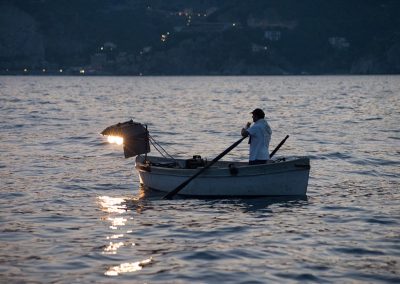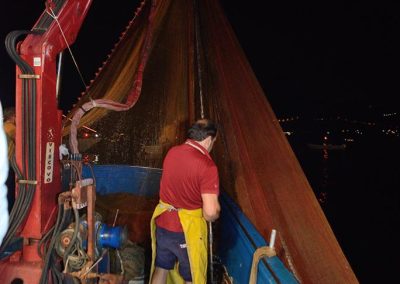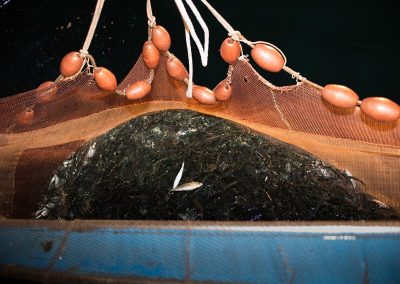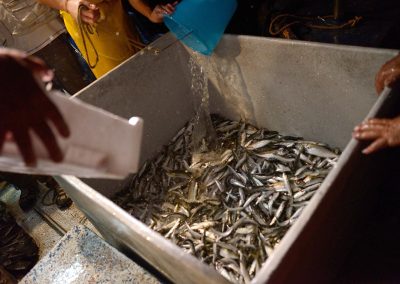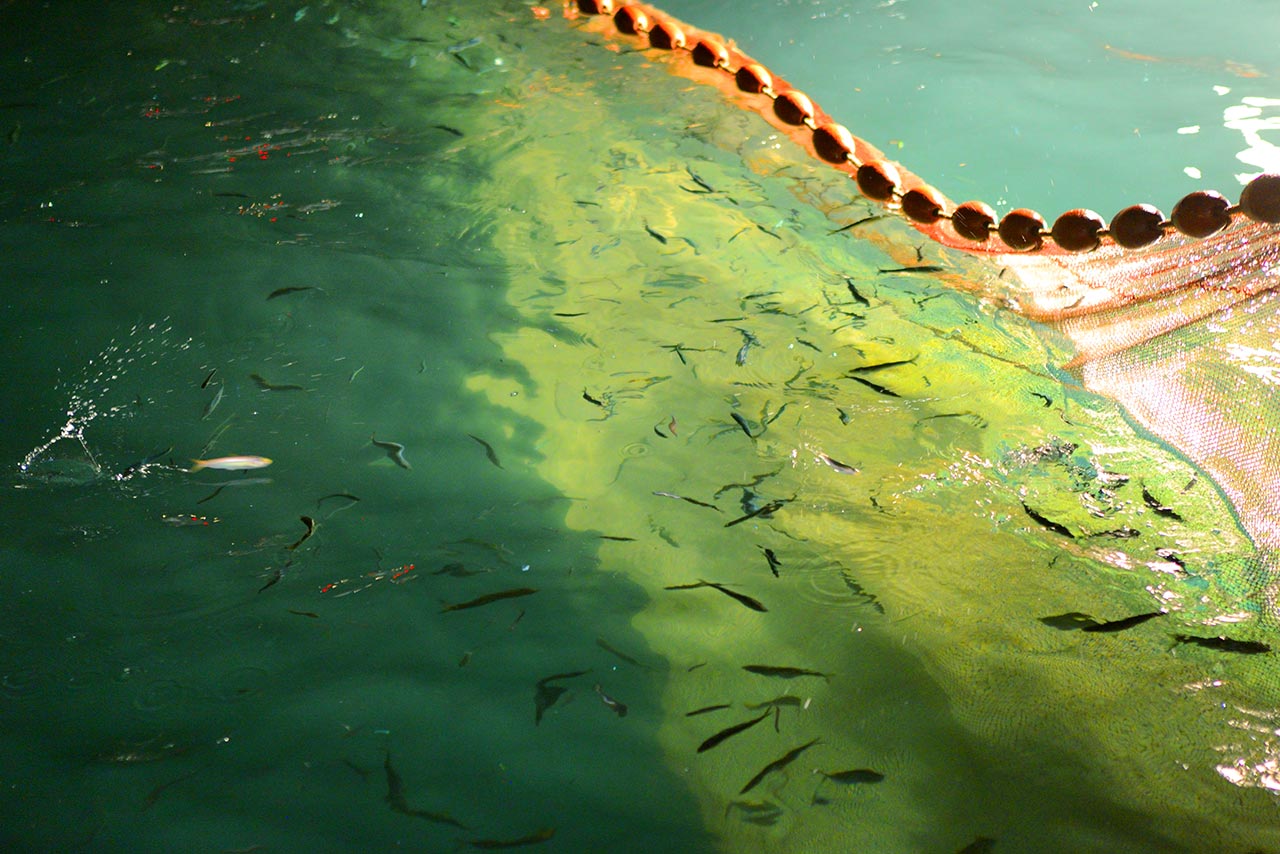
Evolution of anchovy fishing
In Cetara, since ancient times, it has been practiced fishing for anchovies that represented a foodstuff and the main food of coastal populations. This fishing, originally, was practiced with a type of fishing net called “menaide”.
The meshes of this fishing net allowed the small anchovies to pass while the larger ones remained entangled. The anchovies remained entangled in the net were recovered by hand one by one. The anchovies of “menaide” were quite large and excellent for salting.
The menaide fishing net from the 1920s is replaced by the lampara, a purse type. The fishing net has fallen into the sea while another boat with a light source attracts the shoal that is surrounded by the net. At the right moment the light source is switched off and the net is hoisted on board. The use of this fishing net represented a remarkable technological progress for the fishing of anchovies and sardines.
Another type of fishing is called “Sciabica”, a word derived from Spanish “jabeca”, corresponds to the Arab “shabaka”, which means both fishing net. This type of fishing required little money to practice: 6 to 12 fishermen, half of them threw the net into the sea from the beach, the fishing net was distributed by a small boat to a certain stretch of the sea, to return to the shore, where the remaining fishermen collected the other head of the net.
In 1946 a new fishing system was introduced with a fishing net called “cianciolo”, purse net that enclose the shoal collected under the light source. The net is closed like a bag from which fish can not leave. Fishing with this system has been rapidly developing. The traditional lamplight boats, which have become obsolete and insufficient in size to house this new tool, are replaced by fishing boats from 20 to 40 tons.

